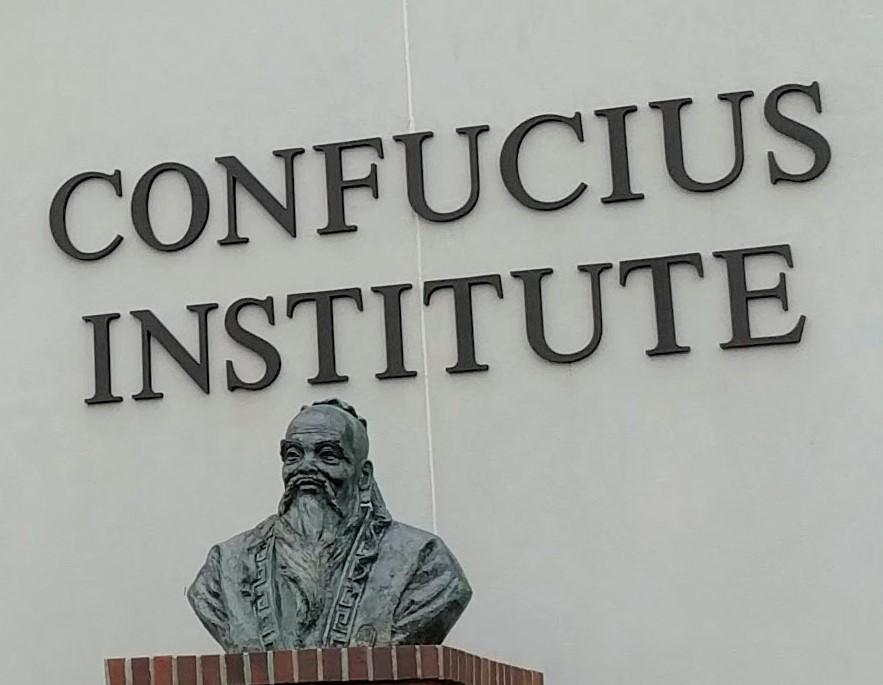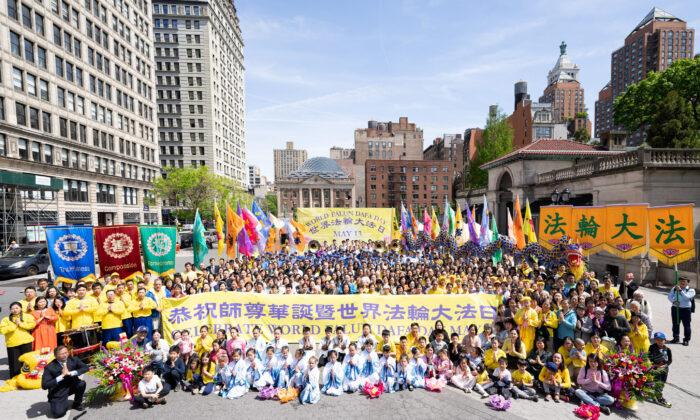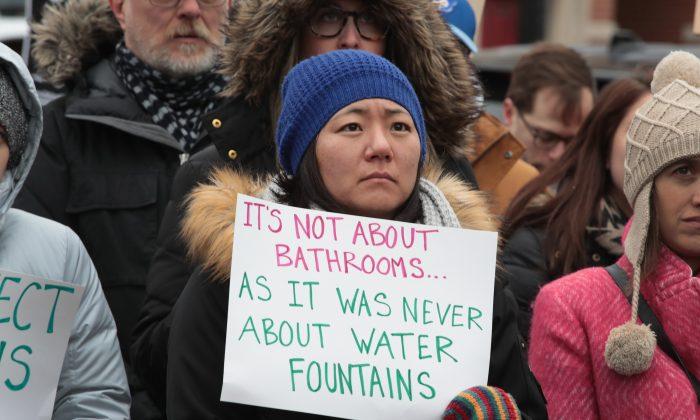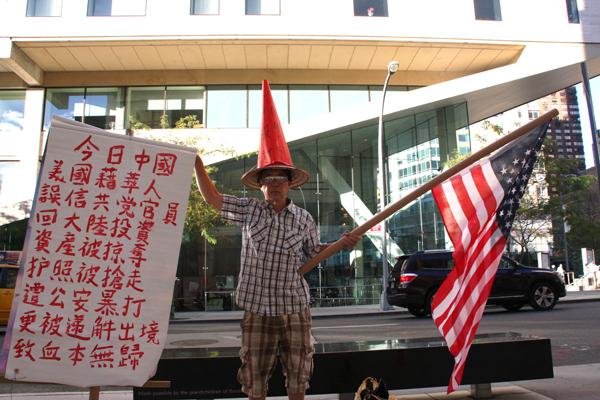The role of the China Institute, or Huamei in Chinese, is different from that of ordinary Asian institutions in the United States. The China Institute in New York has become part of Beijing’s efforts to infiltrate the international community.
Founded in 1926, the China Institute is the oldest base in the United States to promote Chinese culture in American society. At the beginning of its establishment, it was sponsored by the Boxer Indemnity Scholarship Program.
The original building of the China Institute in the Upper East Side of Manhattan was an elegant red brick building with a beautiful Chinese garden. The villa was donated by Henry R. Luce, then President of Time Inc. in 1946. Many people in the Chinese community enjoyed the cultural atmosphere for its elegance and etiquette.
The United Front Work Department
It took 40 years after the establishment of the U.S.-China diplomatic relations for the United States to realize the CCP’s pervasive united front work. According to a November 2020 Newsweek report, more than 600 American groups have been identified as United Front Organizations that have already established multiple channels at the federal, state, and local levels in the United States, fostering a positive view of China that can “be leveraged to Beijing’s gain” and thereby exert influence on the United States.The report mentioned a China Institute event as an example of the Chinese Communist Party’s (CCP)’s United Front work.
The United Front Work Department is charged with overseeing the CCP’s foreign influence operations. It coordinates and supports thousands of overseas organizations to spread propaganda, influence local elites, and suppress dissident groups.
So what exactly does the United Front Work Department do? How did an organization dedicated to non-governmental exchanges between China and the United States become influenced by the CCP’s United Front? Are there any examples that can help people understand how the United Front works?
This article will try to uncover the history of the China Institute to find out whose interests it promotes and for whom.
What Is the United Front?
“United Front” means “uniting with a secondary enemy to strike the main enemy.” It was one of the three strategies, and also the most important one, manipulated by the CCP to defeat China’s ruling Kuomintang Party and to seize power within a year. Later, when the CCP decided to open the country, former leader Deng Xiaoping clearly formulated a “Patriotic United Front” to exert influence on overseas Chinese and to enhance China’s reputation and influence. After Xi Jinping came to power, the goal of China’s United Front was to serve the “rise of China.”In fact, the targets of the United Front are constantly shifting according to changes in the external environment. For example, in recent years, the international community has gradually reached a consensus against the Communist Party, and the United States has taken the lead in decoupling from the CCP. Now “building a community with a shared future for mankind” has become the banner of the United Front with a list of consequences after “decoupling.”
Mao Zedong was not the first Communist Party leader to use the concept of a “United Front,” but he once summarized it: “There are two principles of the united front. The first is unity, and the second is criticism, education, and reform. To reform, we must first unite.” In other words, the uniting, communicating, and inviting is meant to reform and subdue the target.
When Did the China Institute Start Kowtowing to the CCP?
Chinese writer Cai Kefeng said that in the old days, the China Institute focused on traditional Chinese culture. However, he stopped visiting the institute after discovering that it was increasingly leading towards communist ideology, with more guest lectures being provided by mainlanders or pro-CCP people.This change took place from 1988 to 1993 when Charles P. Wang, now deceased, was president of the China Institute. At that time, the institute was in financial difficulties, especially after the Tiananmen Square student massacre in 1989 when the Sino–U.S. relations hit rock bottom. The China Institute had to either merge with the Asia Society or shut down.
According to a Singtao Daily report in November 2019, Wang raised $500,000 and spent four years propping up the China Institute.
In September 2019, Wang accepted an interview from Wall Street Times, an overseas outlet of the CCP-run media Xinhua. The report listed Wang’s accomplishments and contributions, including turning the China Institute into a bilateral cultural communication agency between Chinese and Americans.
Specifically, Wang arranged the first-ever cultural relics and arts exhibition from Beijing’s National Palace Museum and Liaoning Provincial Museum. He also facilitated the loan of a pair of Chinese pandas to the New York City Zoo for a period of six months. In addition, Wang was the main fundraising planner for the construction of a $7 million Suzhou style garden in the Staten Island Botanical Garden.

Charles Wang’s Role in Bridging Sino–U.S. Relations
Charles Wang was born in 1940 in Sichuan Province, China. He moved to Taiwan before 1949 and then came to the United States for graduate school studies.From 1989 to 1993, Wang served as president of the China Institute. According to the online information, he was appointed by President Jimmy Carter as a member of the President’s Commission on Mental Health/Asian American Panel, and served on the Asian and Pacific Islanders Advisory Committee under Presidents Gerald Ford and Ronald Reagan.
Wang also held public office in China as Director of the China Overseas Friendship Association, and as a consultant of the Overseas Chinese Affairs Office of Liaoning Province. These two organizations are both under the direct administration of the United Front Work Department.
In 1989 after the June 4 student massacre, Wang joined the establishment of the Committee of 100, a Chinese-American organization under the influence of former U.S. Secretary of State Henry Kissinger, and served as the founding secretary general. The association exerts influence in the field of Sino–U.S. relations.
These experiences earned Wang at least 22 awards and honors, including the Ellis Island Medal of Honor, which is regarded as the highest achievement for American immigrants. Wang has been referred to as a “bridge” between the U.S. government and the Chinese community. People in the Chinese community believed that he was the key individual for Sino–U.S. relations at a critical time.
Functions in US Society and Contacts With the CCP’s Ministry of Culture
Chinese contemporary art exhibitions have been arranged by the China Institute in places outside China through collaboration with China’s Ministry of Culture. For example, in 2014, an article posted on the ministry’s website reported that Sun Guoxiang, then Chinese Consul General in New York, told Thomas Moore, the acting president of the China Institute at the time, that the culture division at the consulate was ready to launch a series of lectures, and the Institute would be the best venue.The China Institute’s website showed Chinese singer Li Guyi, CCTV host Ni Ping, and Chinese diplomat Ji Chaozhu giving presentations at the Institute.
In 2004, the China Institute organized the Economic Summit Forum. In 2009, the forum was held in Beijing for the first time.
The United Front, Through CI@CI, Infiltrates US K-12 Classrooms
A 2009 article by Chinese Social Sciences Today talked about a “Teaching Chinese” project launched in 1997 from the China Institute. The project invited 15 American school teachers to visit China for nearly one month each summer, and the institute would coordinate the course instructions and teachers’ reports after the trip to ensure the teaching was “advancing with the times.” In addition, it provided a 7-week summer class experience in Beijing to high school students and teaching experiences to teachers from all over the United States.In 2006, with the approval of Hanban (an office under China’s Ministry of Education), the China Institute cooperated with East China Normal University to establish the Confucius Institute American Center, aka Confucius Classroom at the China Institute (CI@CI). The Confucius Institute states that it is committed to letting teachers use the educational resources provided by the CCP, so that students in the classroom can only receive information after it has been screened by the regime.
In 2009, the China Institute launched the first stage of an online platform called the “China360 Project” to teach Chinese language classes to K-12 students (kindergarten through high school grade 12) in the United States.

According to the China Institute website, since 2013, CC@CI has successfully established Confucius Classrooms in partnership with public and independent schools in New York and Massachusetts.
In New York: Trinity School, United Nations International School (UNIS), White Plains High School.
In Massachusetts: the Academy of the Pacific Rim Charter Public School, Boston College High School, Boston Latin Academy, Boston Latin School, Brockton High School and Snowden International School.
Funding for the China Institute
Funding sources of the China Institute include fixed donations from many organizations, regular annual fundraising dinners, and membership dues. Among the many board of advisers are many Chinese celebrities, including Nobel Prize winner David Ho; Chinese TV host Yue-sai Kan; Chen Guoqing whose brother, Chen Feng, is the founder of HNA Group; SOHO China CEO Zhang Xin, and others.The China Institute’s 2018 Blue Cloud Gala is one example. Its live auction raised more than $250,000 within 30 minutes.
The Newsweek report mentioned that “the budget of the United Front system, both at home and abroad, was more than $2.6 billion in 2019. … Nearly $600 million of that was earmarked for work aimed at overseas Chinese communities and foreigners,” and “the total budget outstripped the Chinese Foreign Ministry’s.”
Secret Activities
Although Chinese regime leader Xi Jinping publicly stated that the United Front should be strengthened, the actual operations of the United Front Work Department are often kept secret. Who would “openly” reveal having a connection with the United Front Work Department?The CCP indirectly influences Western society by funding, mentoring, and supporting a large number of various overseas Chinese organizations that rarely disclose their close ties with Beijing. Therefore, anyone could be associated with a United Front Work Department group or representative without knowing it.




